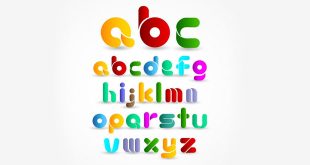Comma Splice Examples
A comma splice is an attempt to join two independent clauses or two sentences using only a comma, without the assistance of a coordinator. Each main clause expresses a complete thought but running these two complete thoughts together blurs the idea. The point is usually not put through effectively.
Comma splices can be corrected in an easy way. There are some effective ways of getting rid of comma splices or fused sentences.
- Separate the two problem sentences using a period.
- Join the two sentences with a coordinating conjunction. There are seven coordinating conjunctions: for, and, nor, but, or, yet, so. Choose the right one.
- Separate the two independent sentences with a semicolon.
- If the second clause illustrates the first, then join the sentences with a colon.
- Subordinate one clause to create a strong link between the two sentences.
Some examples with explanations as to why they are wrong and ways to correct the comma splices are listed below:
Example 1
Comma splice: This has been a very dry summer, therefore, the supply of water in the reservoirs is low.
Explanation: The comma after ‘summer’ is too weak and we don’t know whether ‘therefore’ belongs to the clause before it or the one after it.
Ways to correct:
- Use a semicolon to correct the comma splice: This has been a very dry summer; therefore, the supply of water in the reservoirs is low. (The comma after therefore stays there.)
- Using a coordinating conjunction: This has been a very dry summer, so the supply of water in the reservoirs is low.
- Make it two sentences: This has been a very dry summer. Therefore, the supply of water in the reservoirs is low.
- Make the first sentence a subordinate clause: Because this has been a very dry summer, the supply of water in the reservoirs is low.
Example 2
Comma splice: Heavy rain fell throughout the night, by morning every major road was flooded.
Explanation: Although the second statement is a continuation of the idea, the two statements are grammatically independent sentences.
Ways to correct:
- Make two sentences: Heavy rain fell throughout the night. By morning every major road was flooded.
- Use a coordinating conjunction: Heavy rain fell throughout the night, and by morning every major road was flooded.
- Make a subordinate clause out of the first sentence: Because heavy rain fell throughout the night, every major road was flooded in the morning.
Example 3
Comma splice: I leave muddy paw prints on the kitchen floor, I get in trouble.
Explanation: Two main clauses are joined together with only a comma.
Ways to correct:
- Make two sentences: I leave muddy paw prints on the kitchen floor. I get in trouble.
- Use a coordinating conjunction: I leave muddy paw prints on the kitchen floor, and I get in trouble.
- Use a semicolon to correct the comma splice: I leave muddy paw prints on the kitchen floor; I get in trouble.
- Make a subordinate clause out of the first sentence: When I leave muddy paw prints on the kitchen floor, I get in trouble.
Example 4
Comma splice: Grandma still rides her Harley motorcycle, her toy poodle balances in a basket between the handlebars.
Explanation: Two sentences or independent clauses are joined by just a comma
Ways to correct:
- Make two sentences: Grandma still rides her Harley motorcycle. Her toy poodle balances in a basket between the handlebars.
- Use a coordinating conjunction: Grandma still rides her Harley motorcycle, and her toy poodle balances in a basket between the handlebars.
- Use a semicolon: Grandma still rides her Harley motorcycle; her toy poodle balances in a basket between the handlebars.
- Make a subordinate clause out of the first sentence: While Grandma rides her Harley motorcycle, her toy poodle balances in a basket between the handlebars.
- Make a subordinate clause out of the second sentence: Grandma rides her Harley motorcycle as her toy poodle balances in a basket between the handlebars.
Acceptable Comma Splices
There are few cases when comma splices are perfectly acceptable.
- When the clauses are short and the subject for the clause is alike. E.g. The famous sentence “I came, I saw, I conquered” is an acceptable comma splice.
- When short independent clauses express contrast; the comma splice is a good way to punctuate. If the first clause is a negative statement, the second is an affirmative one and vice versa. E.g. It’s not a comet, it’s a meteor.
- Comma splices are considered most acceptable in poetic writing; they are needed to bring out the rhythmic literary effect E.g. His word is a rock that strikes the ruthless, his sentences bring death to the wicked.
- They are acceptable in passages of spoken dialogue to emulate spoken language more precisely.
The aforementioned examples are laid out so that you understand this commonly occurring phenomenon of comma splice quite clearly. Hope it helped!
 Class Notes NCERT Solutions for CBSE Students
Class Notes NCERT Solutions for CBSE Students


